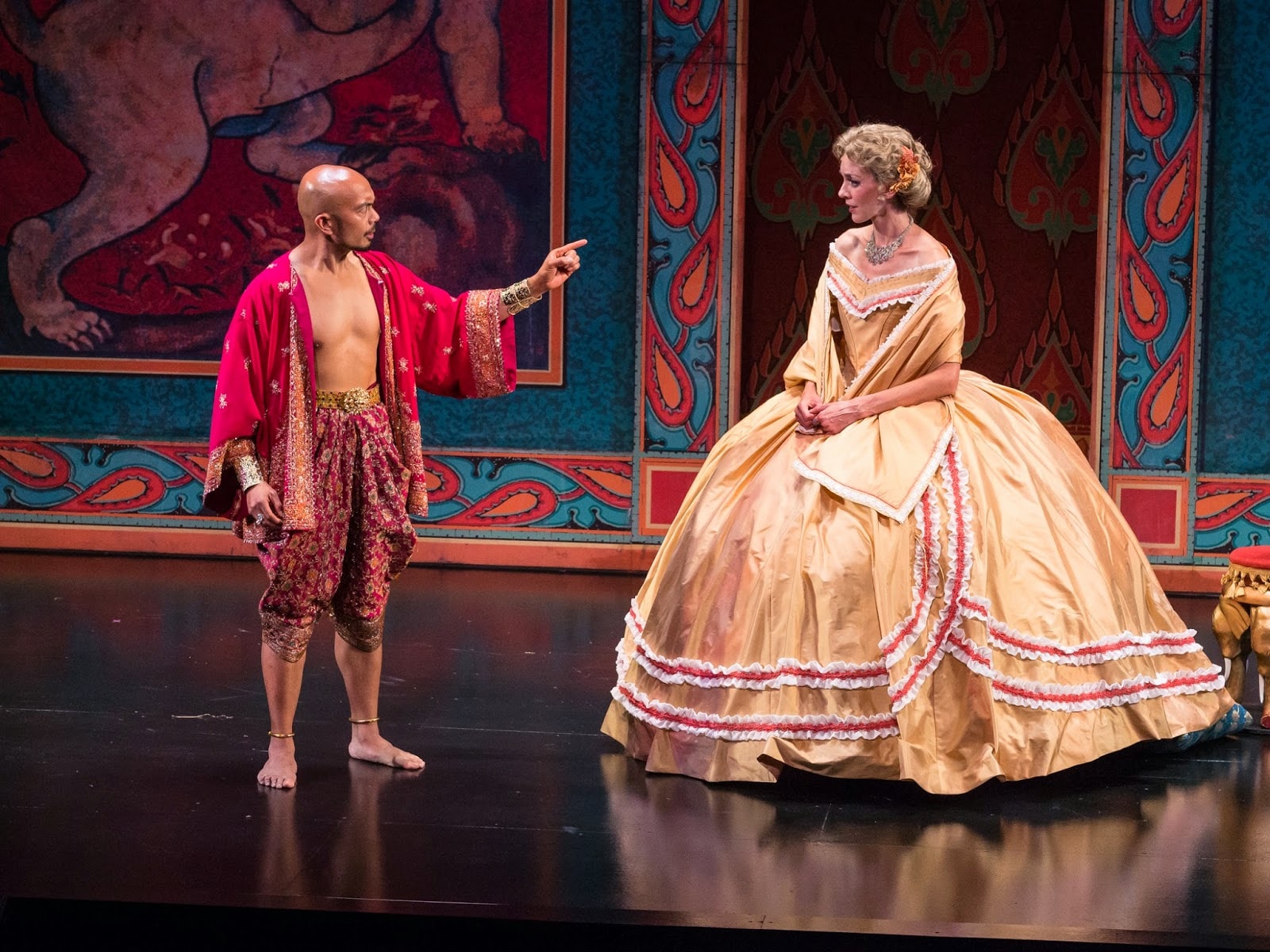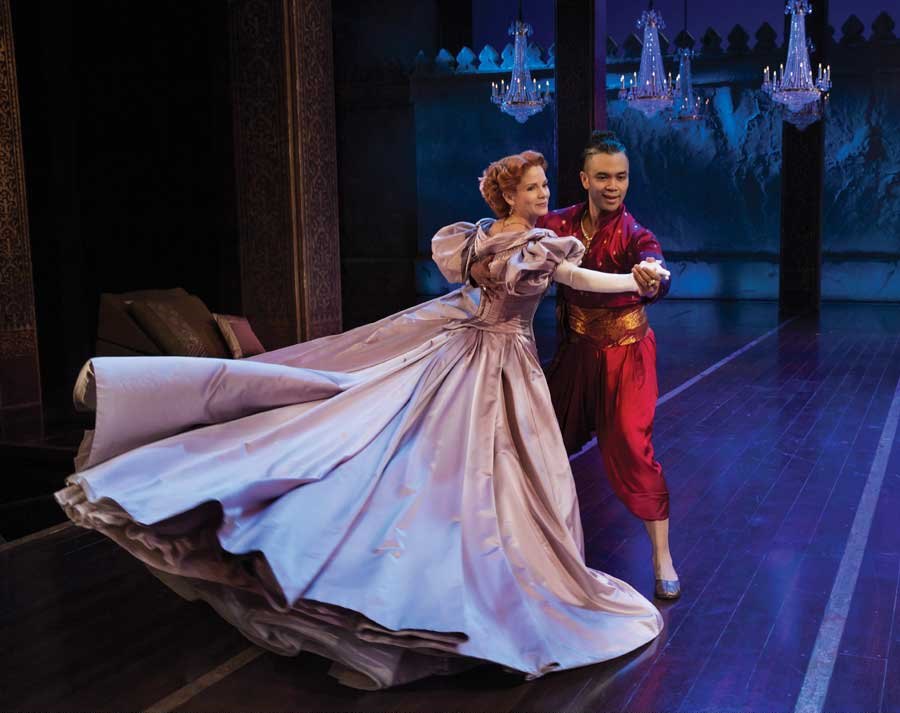Rodgers & Hammerstein’s The King and I is getting a film remake. According to The Hollywood Reporter, Paramount plans to incorporate some diversity and a contemporary perspective into the project, which has yet to attach a writer or director. But while the classic American musical is well-known for its plucky heroine and lush, resplendent score, it also reeks of white savior-ism and an imperialist gaze.
Consider: A white woman from England comes to Thailand to teach the king’s children, and in the process battles slavery, thwarts colonialism, and ends centuries-old practices with a swoop of her hoop skirt. Meanwhile a bumbling Oriental tyrant is tamed just enough by the civilized Englishwoman to protect his kingdom from colonizers—but in the end is unable to go on living as anything more than a crude barbarian. With such a regressive storyline, Paramount’s goals for a more culturally sensitive King and I seem far-fetched. But a new script could make a difference.
Just as David Henry Hwang’s 2002 rewrite of Flower Drum Song retained Rodgers & Hammerstein’s original score while offering a more humanized portrayal of Chinese American life, a radical reimagining of The King and I could conceivably maintain its music while centering Anna’s fascinating real-life origin story, moving the script toward a more critical narrative that explores white supremacy from the perspective of the colonized.
In fact the real Anna Leonowens was a mixed-race Anglo-Indian woman who kept her racial identity a secret for almost her entire adulthood, and the secret persisted for decades after her death. Born in British India to an Anglo-Indian mother and a British father, Anna belonged to an economic and social underclass in a society rife with racial prejudice. Eurasian women had few opportunities, and when her husband died, Anna pretended to be an English gentlewoman to obtain a teaching position at the Siamese court. Anna managed to pass as a white woman for the rest of her life, and wrote a series of popular memoirs about her time in Siam. But her books were full of fabrications: Anna repeatedly misrepresented the king, concocted events, and exaggerated her influence on the monarchy.
“Part of the story was that this white Western woman put the entire nation on the path to democracy and equality,” said Alfred Habegger, the award-winning author of Masked: The Life of Anna Leonowens. “It’s a fantasy that Americans wanted to embrace, especially after the victories of World War II.”
Anna probably lied about her race to escape prejudice and gain social status. While her writing portrayed Asian women sympathetically, Anna did not want to be seen as Asian herself.
“She picked up a lot of prejudice from the British in India, looking down on dark-skinned people and seeing dark skin as a sign of degraded character,” Habegger said. “But she also resented the English for looking down on the people of India and being ignorant.”
A revamped King and I could zoom in on Anna’s secret identity to tell the story of a more complicated and contradictory heroine.

Imagine these potential plot changes: Anna Leonowens is a mixed-race woman who comes to Siam to teach the king’s children. Her racial identity is a secret, but a coda to “Hello, Young Lovers” reveals it to the audience. She continues to play the part of an English lady while struggling to adapt to Siam. Later, the king discovers a letter that reveals Anna’s Indian heritage. While surprised, he keeps this information to himself.
When Lady Thiang asks Anna to talk to the king about the dicey situation with the British government, she reluctantly agrees without promising anything. The king comes up with the idea for the ball, asking Anna for her help because of her knowledge of British culture. She initially refuses, but the king reveals that he knows her true identity. Anna denies it at first, shocked that he has discovered the truth, but eventually concedes. The king argues that because Anna’s struggles are due to colonialist racism, she should take his side against the British. Anna, eventually swayed, agrees to help the king stave off the imperial advances.
At the ball, Edward Ramsay romances the unknown Anna. She is flattered to be taken for an English lady and exaggerates her influence on the king to further impress him. After Tuptim’s capture, Anna calls the king a barbarian, asking him how he can oppose colonialism while condoning slavery. She leaves, threatening to tell the world that he is a despot.
The last scene shows Prince Chulalongkorn, the king’s eldest son, and Anna meeting decades after the king’s death (such a reunion happened in 1897). Chulalongkorn asks Anna why her book was full of lies, but Anna insists that she told the truth. They argue until Chulalongkorn implicitly forgives her, giving her his father’s ring.
A new plotline need not be historically accurate, but it would ensure that fictional elements do not perpetuate racist harms. Several scenes, such as the opening, ought to be revamped to excise otherizing portrayals of Thai people. Actors should not speak in broken English. And while there may still be elements of culture clash between the two leads, the king should get more credit for the reforms he introduced before Anna’s arrival.
Such a version of The King and I would dismantle much of the musical’s white savior framework. Instead of Anna singlehandedly civilizing Siam, Anna and the king would momentarily be co-conspirators, finding comradeship in their Asian identities and working together to challenge the white supremacy that has sought to diminish them. And while Anna brazenly attempts to bring human rights to Siam, her own internalized racism and desperation to pass as white would remind audiences that the West is responsible for its own cruel racial hierarchies and indignities; her charade would illustrate the hypocrisy of the white man’s (or woman’s) burden.
This would do more than just humanize the Asian characters. It would also make Anna more interesting. As currently written, Anna is somewhat flat and flawless; she does not change much throughout the play, and the audience knows little about her background. In a version where a mixed-race Anna is forced to reckon with her heritage, she would develop a fascinating arc, briefly teetering between two worlds before choosing to permanently discard her Asian identity. And she would learn something from the king: that feigning whiteness might be necessary for survival, but you can never forget your origins.
Although no rewrite of The King and I could ever be fully removed from Anna Leonowens’s imperialist lies—her point of view is right there in the show’s title—a new version that centers Anna’s hidden Indian identity could unpack the paradoxes surrounding colonial oppression, racial hierarchy, and slavery. Rodgers & Hammerstein aimed to address these issues in their way back in 1951, but a decolonized script could do a better job of achieving their vision. It’s time to take off Anna’s mask and get to know her.
Sravya Tadepalli is an Oregon-based freelance writer whose work has been seen in Arlington Magazine, Brown Girl Magazine, Oregon Humanities, The Portland Tribune and The Salem Statesman-Journal.


